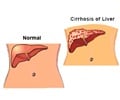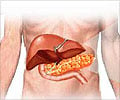For both long-time alcoholics and patients with mitochondrial disease, muscle weakness is a common symptom.

Mitochondria -- organelles that produce the energy needed for muscle, brain, and every other cell in the body -- repair their broken components by fusing with other mitochondria and exchanging their contents. Damaged parts are segregated for recycling and replaced with properly functioning proteins donated from healthy mitochondria.
While fusion is one major method for mitochondrial quality control in many types of cells, researchers have puzzled over the repair mechanism in skeletal muscle -- a type of tissue that relies constantly on mitochondria for power, making repair a frequent necessity. However, mitochondria are squeezed so tightly in between the packed fibers of muscle cells, that most researchers assumed that fusion among mitochondria in this tissue type was impossible.
An inkling that fusion might be important for the normal muscle function came from research on two mitochondrial diseases: Autosomal Dominant Optical Atropy (ADOA) disease, and a type of Charcot-Marie-Tooth disease (CMT). A symptom of both disease is muscle weakness and patients with both these diseases carry a mutation in one of the three genes involved in mitochondrial fusion.
To investigate whether mitochondria in the muscle could indeed fuse to regenerate, first author Veronica Eisner, Ph.D., a postdoctoral fellow at Thomas Jefferson University created a system to tag the mitochondria in skeletal muscle of rats with two different colors and then watch if they mingled. First, she created a rat model whose mitochondria expressed the color red at all times. She also genetically engineered the mitochondria in the cells to turn green when zapped with a laser, creating squares of green-shining mitochondria within the red background. To her surprise, the green mitochondria not only mingled with the red, exchanging contents, but were also able to travel to other areas where only red-colored mitochondria had been. The results were exciting in that they showed "for the first time that mitochondrial fusion occurs in muscle cells," says Dr. Eisner.
The researcher team, led by Dr. Gyorgy Hajnoczky, M.D., Ph.D., Director of Jefferson's MitoCare Center and professor in the department of Pathology, Anatomy & Cell Biology, then showed that of the mitofusin (Mfn) fusion proteins, Mfn1 was most important in skeletal muscle cells.
Advertisement
"That alcohol can have a specific effect on this one gene involved in mitochondrial fusion suggests that other environmental factors may also specifically alter mitochondrial fusion and repair," says Dr. Hajnoczky.
Advertisement
Source-Eurekalert










